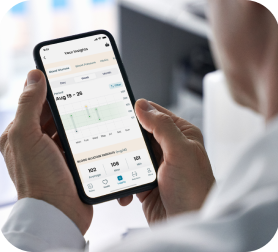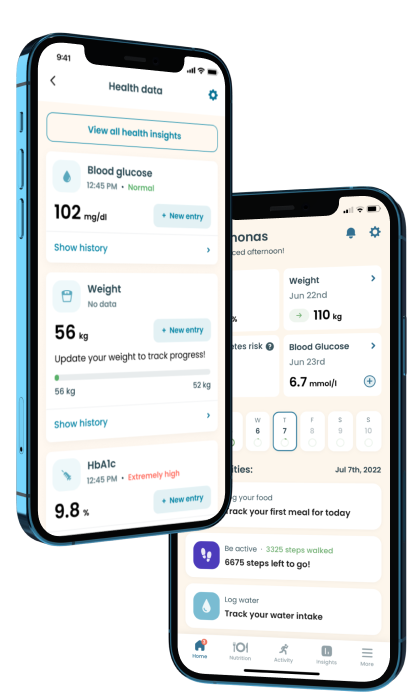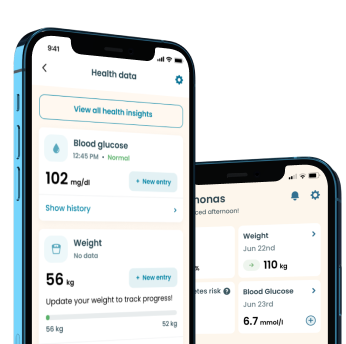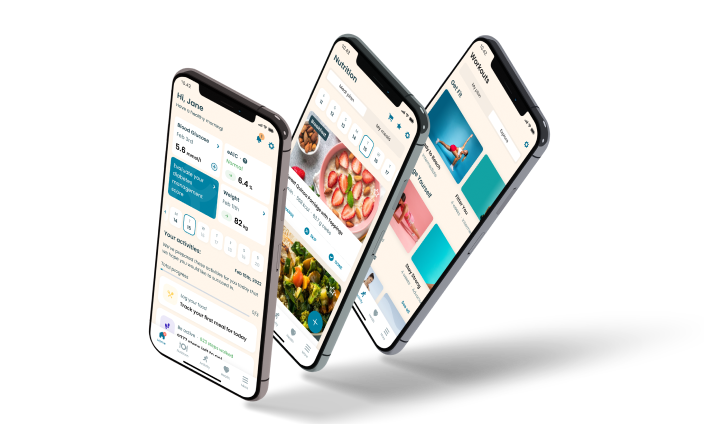Pretzels and Diabetes: Can a Diabetic Eat This Snack?

Bad
83
384 kcal
Pretzels aren’t considered diabetic-friendly foods for many reasons. This snack is known for its notoriously high sugar content, making it difficult for people with diabetes to manage blood sugar levels.
Pretzels contain wheat and yeast, both having high glycemic indexes. For people with diabetes that seek blood sugar control, it’s generally advised they reduce their consumption of pretzels to the barest minimum or avoid them due to the ill effects they elicit.
However, different pretzels are now available with various expert recommendations on how diabetics can occasionally eat them. This article aims to identify these various approaches and pretzels’ variety to confirm if they’re truly safe for people with diabetes.
Nutritional value
- Protein 10 g
- Carbohydrate 80.4 g
- Fat 2.93 g
- Fiber 3.4 g
- Sugar 2.21 g
- Cholesterol 0 g
Pretzels as Snack Foods
Pretzels are a popular food in the United States and across Europe and are loved for their chewy feel and sweet taste. Its origin is credited to Germany, where it was a household and staple food. However, Italy, Austria, and France seem to have had their pretzels variations around that time.
In current times, these snacks abound in different varieties all over the globe, and not all of them are soft and showy. You can easily find hard and crunchy pretzels with the same yummy taste and shiny brown appearance.
Pretzels are typically a bread variation but are sweeter than normal bread due to their high sugar content. It’s made with yeast and wheat flour and has a twisted knot shape that makes it easy to hold.
Again due to cultural differences, these bread can exist in different shapes. Apart from wheat, yeast, and sugar, other major pretzels’ ingredients include water, salt, and butter.
The soft pretzels are large and usually eaten alone or added to meals. On the other hand, soft pretzels are generally hand-made by households and consumed within a few hours to a few days.
Hard Pretzels are smaller and can be specially persevered for a while. They’re also easy to find in grocery stores and are the most accessible pretzels.
Typically, a pretzel isn’t entirely a healthy snack and isn’t a choice snack for a person trying to keep a healthy diet. The snack contains ingredients that aren’t exactly in line with the goal of people that want to lose weight, lower blood sugar levels, and avoid cardiovascular complications. While pretzels look like baked potato chips, they’re quite different in composition.
Irrespective of the variety of pretzels, they have basic simple carbs as ingredients, making diabetics and people with underlying conditions vulnerable to blood sugar rise. Certain varieties of pretzels are usually enjoyed with garlic, nuts, cinnamon sugar, chocolate, and seeds. Most of these additions have different health risks that make them unhealthy.
Another major aspect of pretzels people with diabetes should consider is preparation. Prior to baking, pretzels are treated with lye or sodium hydroxide solution. This solution triggers a chemical reaction that gives a shiny brown appearance on the dough surface.
Food-based sodium hydroxide is considered safe for consumption but can become dangerous if not used properly. This particular risk makes baking soda an accepted alternative. So, people with underlying conditions should opt for pretzels made with baking soda to avoid the risk that sodium hydroxide can cause.
Summarily, it’s important to note, though, that pretzels are carb-filled snacks and are ordinarily not a friendly diabetic food.
Take a quiz
Discover what Klinio app can do for you
Healthy diabetes meal plan crafted just for YOU

Personalized workouts with no equipment needed

Track your progress with smart tracking tools

The Nutritional Value of Pretzels
Pretzels’ nutritional profile indicates that it’s not the best of snacks for people trying to live healthily.
The snack is high in simple carbs and very low in fat and protein. The available fat in the snack are “bad” fats (such as saturated fat) with different health risks. However, it’s not all bad with pretzels, as the snack contains several other nutrients.
Since the methods of making soft and hard pretzels aren’t exactly the same, we’ll consider the nutritional value for both to provide complete information about the snack.
That said, below is the nutritional profile of typically soft and hard pretzels (different serving sizes, though).
| Nutrient | 1 Medium (120 Grams) Salted Soft Pretzel | 1.5 Ounces (42.5 Grams) Salted Hard Pretzels |
| Calories | 408 | 163 |
| Fat | 4 g | 1 g |
| Protein | 10 g | 4 g |
| Carbs | 84 g | 34 g |
| Sugar | less than 1 g | less than 1 g |
| Fiber | 2 g | 1 g |
| Sodium | 41% DV | 23% DV |
| Folate | 7% DV | 19% DV |
| Copper | 17% DV | 7% DV |
| Iron | 26% DV | 11% DV |
| Niacin | 32% DV | 14% DV |
| Riboflavin | 26% DV | 11% DV |
| Selenium | 37% DV | 3% DV |
| Thiamine | 40% DV | 15% DV |
| Zinc | 10% DV | 4% DV |
Can Diabetics Eat Pretzels?
Diabetes is one condition that has to be managed with extreme care; as such, every meal you consume has to be in line with blood sugar level control. Like their nutritional value suggests, pretzels aren’t the best snack to manage diabetes. Both the hard and soft pretzels comprise ingredients that increase the risk of diabetic complications, including sudden blood sugar spikes.
Both pretzels are made of wheat flour which comprises bad carbs that increase blood glucose levels. When mixed with the other ingredients in pretzels, wheat flour easily breaks down and becomes sugar that the body uses for energy. However, since wheat is more of simple carbs with high glycemic indexes, they’re rapidly converted to sugar, leaving the body with more glucose than it needs.
These trigger spikes in blood glucose levels, worsening the condition and causing vulnerability to worse complications like heart disease, stroke, kidney disease, and other cardiovascular conditions.
Pretzels do contain fiber, but it accounts for only a small amount of the total carbs in the snack. Fiber generally improves blood sugar regulation and can help reduce the effect of bad carbs. It also helps improve gut health and relieve constipation pains. However, these effects are non-existent in pretzels as their supposed fiber content is almost negligible compared to their total carb content.
The classic pretzels made with refined grains are the major culprit that people with diabetes must avoid. Experts generally advise against eating pretzels like every average snack, as that will cause a spike in your blood sugar level.
Many experts advise that people with diabetes eat pretzels with other healthy foods as that will help reduce the cravings of snacks consumed and help balance out the glucose effect. We’ll discuss more of this in the next section.
How to Eat Pretzels as a Diabetic
Again, pretzels aren’t great for people with diabetes. However, there are ways to mitigate their unhealthy effects, and diabetics can have a bite once or twice occasionally without fearing the worst.
The first major consideration is to go for whole-grain wheat. Whole grains effectively improve the fiber content in pretzels up to as much as 3 grams. This addition makes the fiber in pretzels more effective. Also, eating pretzels with fiber-rich food is another way to increase fiber stacking.
Similarly, you can employ this method when pairing pretzels with food high in lean protein and healthy fats.
However, the most important way to ensure your health isn’t in jeopardy while eating pretzels is to eat in small amounts. This way, you can keep your blood sugar steady and not risk any complications.
Some excellent foods for diabetics that you can couple with pretzels are:
- Fresh fruits and veggies
- Mixed nuts
- Hummus
- Yogurt
- Peanut butter
- Trail mix
- Dark chocolate
Snacks Diabetics Can Eat Instead of Pretzels
You can opt for other healthier snacks in place of pretzels if your condition is worsened and you want something different from normal meals. While flavored coffee drinks and sweetened breakfast cereals may be out of the equation, some work well with people who have diabetes. Let’s have a look at them.
Sugar-Free Hot Cocoa Made With Dark Chocolate
This drink works well for people that have diabetes but want something sweet. Namely, the drink leaves a sweet taste in your mouth without exposing you to the consequences that pretzels cause on blood sugar.
Dark chocolate is very rich in nutrients and doesn’t raise blood sugar levels significantly. When making a dark chocolate drink, ensure you exclude sweeteners or sugar as that will eliminate the benefits that it brings to the table.
According to the USDA, eating the recommended daily value of dark chocolate supplies the body with bone-building minerals. Therefore, you can go for this drink without much worry. All you have to do is drink it moderately.
Oatmeal With Berries
A mix of oatmeal and berries is a healthy meal choice with great taste. Oatmeal is generally considered a healthy food, and so are berries. Both combinations are great for blood sugar levels and are much more nutritious than pretzels in every way.
A ½-cup serving of unflavoured plain oatmeal has only 77 calories, 2 g of fiber, 3 g of protein, and 1 g of fat. Adding strawberries only makes the meal much more nutritious than it ordinarily is.
Salsa and Baked Potato Chips
Pretzels are known for their similar appearance to baked potato chips, and while both definitely taste different, the latter is healthier and great for people with diabetes. Moreover, eating baked potato chips with salsa is a great healthy combination that is delicious and extremely healthy.
The USDA recommends a ¼ cup of salsa per serving. This contains about 12 calories, an extremely low value.
Adding this to baked potato chips—filled with potassium—creates a healthy meal that’s extremely enjoyable. You can also add tomatoes and vegetables as well for taste and flavor.
Other Steps Diabetics Can Take To Avoid Blood Sugar Spikes
Diabetes isn’t a condition you can effectively manage in one day, especially when it has developed over time. So even if you decide to reduce your pretzel consumption or totally cut it off and replace it with healthier friendly diabetic snacks, you’ll still need to include other diabetic management plans.
These steps can help improve blood sugar control and leave you feeling healthier all around.
Eat Healthily
A vital step that people with diabetes should take is to eat healthily. While the earlier suggested snacks are excellent, they can’t exactly replace a nutritious whole meal.
You can add fresh fruit and dried fruit as toppings to your meals to add flavor. However, you must stick with only safe and nutritious fruit for the best benefit. That way, you’ll maintain a healthy blood sugar level and lead a healthy lifestyle.
Corn syrup and nut butter are also healthy snacks in their own right that you can add to food.
Use an Insulin Pump to Boost Insulin
An insulin pump is a computerized device that supplies you with rapid-acting insulin from underneath your skin with the help of a thin tube. The insulin pump gives you a steady flow of insulin during the day and at night, compensating for the lack of the natural flow meant to control blood sugar.
The insulin supplied during the day is called basal insulin, while the one supplied after a meal is known as bolus insulin and helps regulate blood sugar after eating. The area where the device attaches to the skin is the infusion area, and it could be on the thigh, belly, or buttocks.
Stay Hydrated
Water is essential to our general well-being as it helps regulate the body's temperature and protects our organs. It’s also essential while controlling blood sugar as it doesn’t add more sugar to the blood.
When there’s an increase in blood sugar, the body removes the excess sugar and flushes it through the urine. This results in dehydration as you have lost some fluid, and drinking water would help replace whatever you've lost and balance your blood sugar.
On the other hand, dehydration causes an increase in blood sugar as it reduces blood volume.
Reduce Stress as Much as Possible
Stress management is essential for good health. An increased stress level can cause health troubles when controlling blood sugar. This is because the body's response to stress can result in serious diabetic complications.
So, stress management should be a priority when maintaining blood sugar levels. The hormone cortisol increases when the body is stressed, which results in more fat and glucose in the body, making it difficult to control the blood sugar. Cortisol also increases your appetite, causing you to eat more; this is a cause for concern since what you eat influences your blood sugar levels.
Get Quality Sleep
Quality sleep enhances a healthy body system and reduces blood sugar levels. Decreased sleep or partial deprivation of sleep can worsen insulin resistance, increasing blood sugar. The hormone cortisol increases due to a lack of quality sleep, causing the glucose in the blood to increase.
Moreover, sleep deprivation reduces insulin sensitivity, leading to an increase in blood sugar levels. Sleep deprivation also induces inflammation and oxidative stress, resulting in increased sugar levels.
Sleep is linked not only to increased sugar levels but also low blood sugar, as it’s been proven that low blood sugar can cause sleep issues.
Final Words
Pretzel is a popular snack that’s won the heart of many in the United States and worldwide. However, the fact that it poses a risk to people with diabetes if not specially made and carefully eaten says a lot.
We’ve tried to outline the good, bad, and ugly sides of pretzels as it relates to diabetes. The major goal of diabetes management is to cut off as many carbohydrates that cause blood sugar spikes and adopt important lifestyle changes. However, this doesn’t imply that you should eliminate carbs from your diet.
There are good carbs that can actually help you manage your condition better. You only need to include nutritious meals that work well with fiber and live a healthier life.
Knowing the right food to eat as a diabetic can be a hassle for many. However, your doctor can help with certain diet-modifying suggestions. If you have limited access to one, then a digital diabetes meal planner can help you choose the right meals and plan how you eat them to the best effect.
Our Klinio app is one of the recommended meal planners you can trust to ensure that you get only the right food into your system. Namely, this virtual caregiver helps you get the right amount of fiber and healthy fats in place of bad carbs. It also helps you track your weight loss progress and blood sugar levels while providing an extensive knowledge hub on how various foods affect your condition.

Download Klinio app!
Get more by downloading our free Klinio App. Analyze your health, form new habits and manage your diabetes anytime, anywhere.
OR
SCAN QR CODE



GET THE APP











